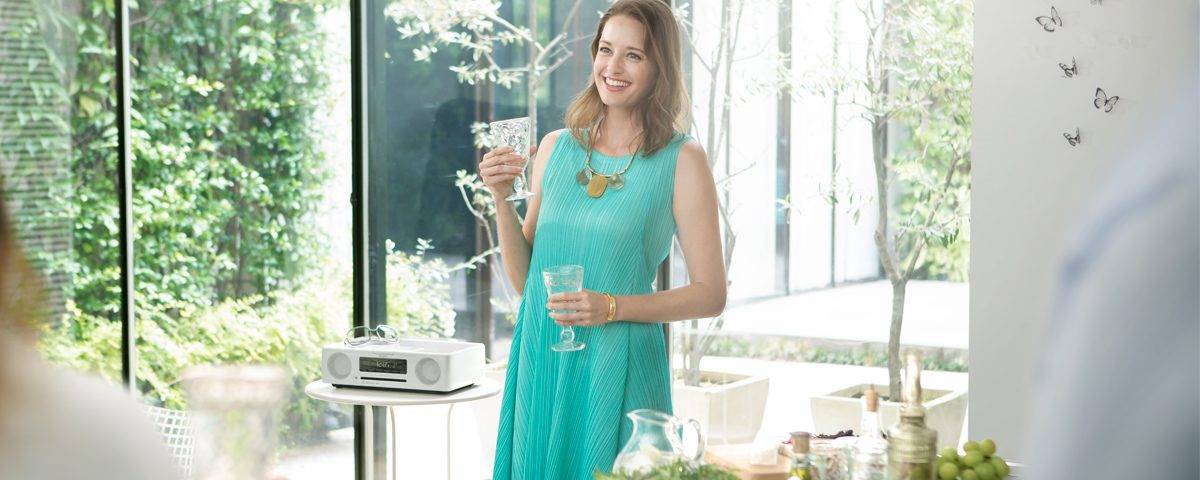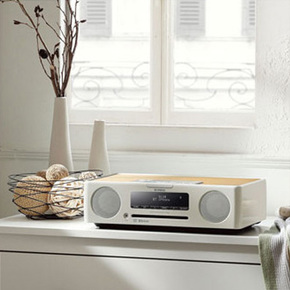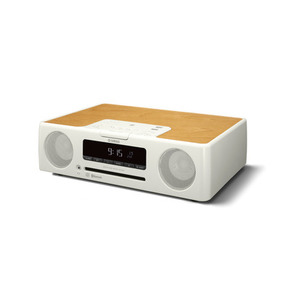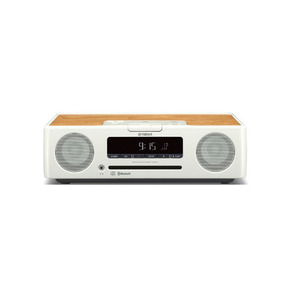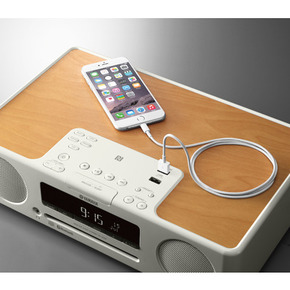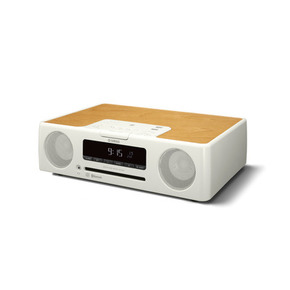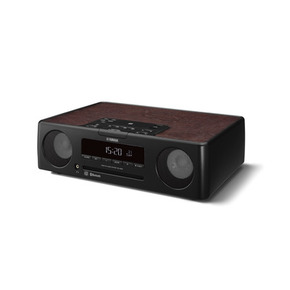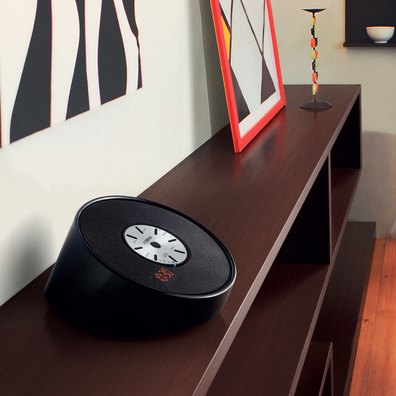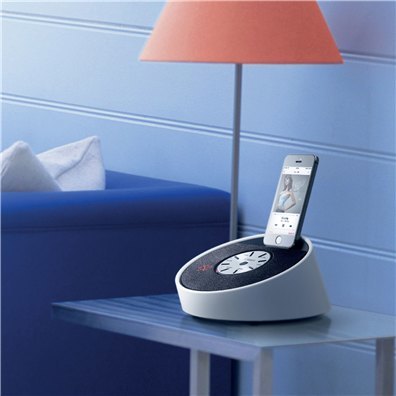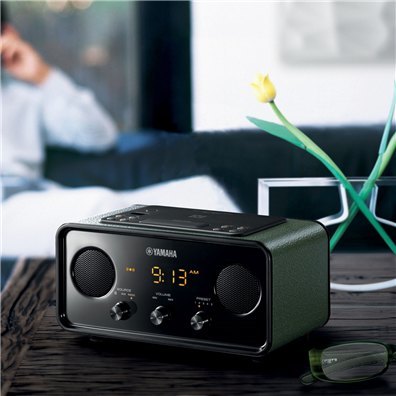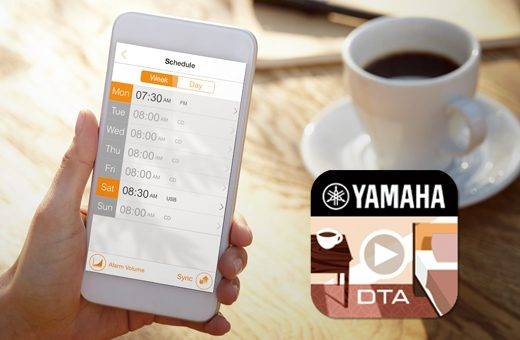TSX-B235 已停產
閑適生活風
您將情不自禁地愛上TSX-B235柔和、自然的外觀。頂部表面為光滑的天然木制工藝面板,搭配您的手機、玻璃制品或其他私人裝飾品是如此相得益彰。
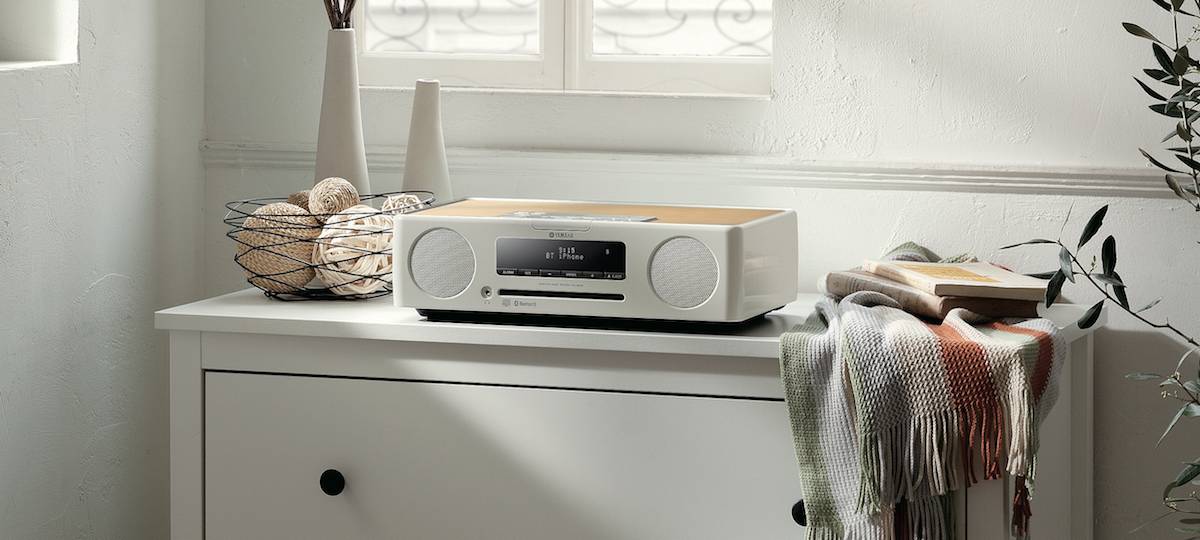
設計實用性
TSX-B235配備兩個USB端口——一個作為音樂播放,另一個是充電專用。即使在電源關閉的待機狀態下,兩個端口仍可為設備充電。
*USB連接狀態下不能使用APP和操作主機
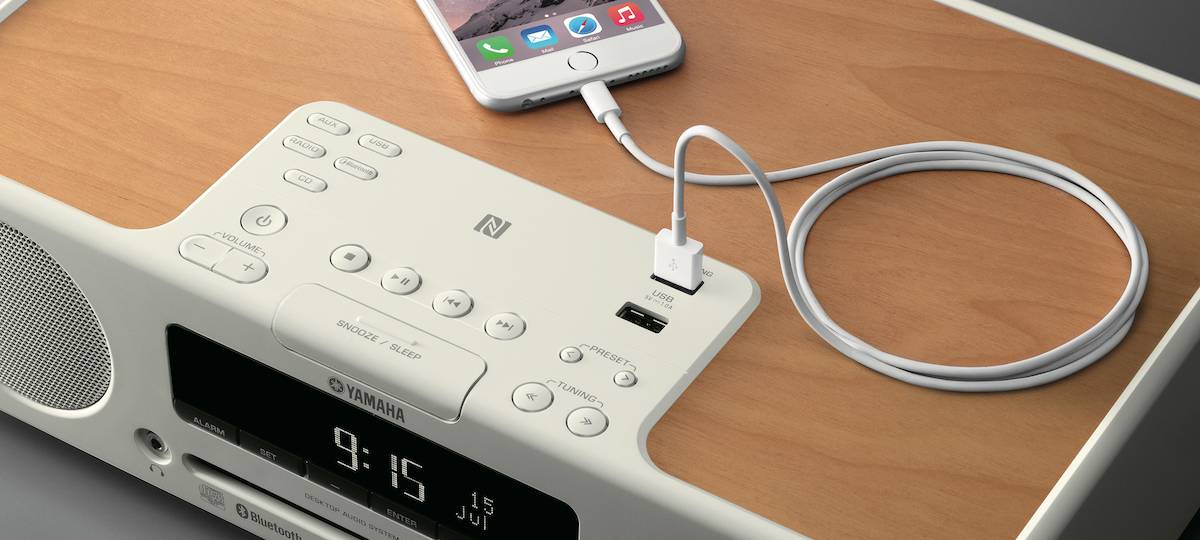
掌控好聲音
藍牙功能可無線播放儲存在智能手機或平板電腦上的音樂。TSX-B235同時具備aptX®解碼功能,可通過藍牙傳輸非壓縮全頻音樂。更值得一提的是,NFC功能可進行自動即時配對,使用非常簡便。

音樂零距離
操作變得如此簡單。通過雅馬哈免費的DTA CONTROLLER App,智能手機或平板電腦將變成遙控器,通過直觀且簡便的觸屏,能完全操控包括電源、音量、音調及其它各種功能。
| 藍牙 | 版本/配置文件 | Version 2.1+EDR / A2DP | |
| 音頻代碼 | SBC, AAC, aptX? | ||
| 大通訊距離 | 10 米 (無障礙物) | ||
| NFC | Yes | ||
| CD格式 | Audio CD, MP3, WMA | ||
| USB音頻格式 | MP3, WMA | ||
| 調諧器 | FM | ||
| 預設電臺 | FM x 30 | ||
| 輸入端口 | 3.5毫米立體聲迷你插孔 | ||
| 鬧鈴功能 | Alarm, Snooze, Sleep | ||
| 驅動單元 | 雙 8cm全音域圓錐形 | ||
| 大輸出功率 | 15W+15W (6 ohms, 1kHz, 10%THD) | ||
| 尺寸 (寬 x 高 x 深) | 370 x 110 x 234 mm | ||
| 重量 | 3.9kg | ||
| 附件 | 遙控器 | 1 | |
| FM天線 | 1 | ||
| 電池 | 2 | ||
| USB蓋 | 2 | ||
Bluetooth®

Bluetooth®商標表示該產品能連接可選配的YBA-10藍牙無線音頻接收器至功放并支持A2DP音頻流。通過可選配的YBA-10藍牙無線音頻接收器,您可以通過帶有藍牙功能的手機、移動設備或者個人電腦無線連接,享受音樂。
NFC
NFC是Near Field Communication縮寫,即近距離無線通訊技術。
NFC是一種非接觸式識別和互聯技術,可以在移動設備、消費類電子產品、PC 和智能控件工具間進行近距離無線通信。NFC提供了一種簡單、觸控式的解決方案,可以讓消費者簡單直觀地交換信息、訪問內容與服務。
aptX
apt-X是一種基于子帶ADPCM(SB-ADPCM)技術的數字音頻壓縮算法。
apt-X的使用主要集中在藍牙耳機和藍牙音箱,其終端和藍牙耳機 音箱都必須支持apt-X才能發揮其功能。藍牙音頻傳輸存在一定延遲。很大的感受是影音延遲可以降到低。
CD Text Display

獲取正在播放的CD相關信息,包括:CD的名稱,藝術家和曲目。
USB

USB接口為您提供了iPod/iPhone便捷連接。連接同時可以充電。同時您可以連接USB海量存儲設備(USB閃存),以播放其中的MP3,WMA音頻文件。
IntelliAlarm

嶄新的鬧鈴方式輕松帶您踏入新的。 雅馬哈新的智能鬧鈴(IntelliAlarm)功能,通過您自己選擇的音源輕輕地把您喚醒,首先過濾掉令人感覺不適的高頻率聲音,然后逐漸恢復至完整的音頻頻譜,以確保您在嗶嗶聲前清醒過來。
DTA CONTROLLER

DTA CONTROLLER 增強了桌面音響的操作性。
起床新方式,輕松喚醒您的每一天。
雅馬哈新的智能鬧鈴功能用您選擇的音源溫柔地把您喚醒。首先過濾掉音樂中不舒服的高頻,再漸漸地恢復到整個音頻,之后用嗶嗶聲徹底把您喚醒。
該功能讓起床變得越來越輕松。

調查研究 (英文)
在東京醫科齒科大學研究生院醫學信息學系的幫助下,我們研究了智能鬧鈴功能和普通嗶嗶聲的區別。
- 參與者總共進行了8次試驗,分別在30分鐘、60分鐘、90分鐘和120分鐘的小睡后被智能鬧鈴和嗶嗶聲喚醒,之后用三種心理學問卷來測量他們的主觀感受。計算和分析用音樂和用鬧鐘聲喚醒主觀上的數據區別。研究結果顯示用智能鬧鈴喚醒比用嗶嗶聲喚醒更令人舒服。
您可以閱讀以下研究報告:
Effect of Music upon Awakening from Nap

Yuki TANAKA
Yuki Tanaka was born in Oita, Japan, on November 9, 1981. She received a Bachelor of Engineering degree from Tokai University, Japan, in 2005, and a Master of Engineering from Tokai University, Japan in 2007. Since April 2007, she has been a Ph.D. student at Tokyo Medical and Dental University Graduate School, Department of Medical Informatics.
She studied piano in Japan under the pianist Toshie Nakashima since 1985, when she was 4 years old. She participated in piano contests, including the Student Music concours of Japan, Tosu City Hupfer Memorial Piano Concours, International Chopin Piano Competition in ASIA, the Oita Eisteddfod piano section, and the youth section of the Takahiro Sonoda Prize International Piano Contest. And she has received several prizes, including a prize for encouragement at the An die Musik Piano contest in 2009.
She is a part-time teacher at Nippon University (from 2008) and Kitazato University (from 2007). Her current research interests are “Music Therapy for Dementia Patients: Tuned for culture difference” and the “Effect of music upon awakening for comfortable awakening.”
She received the Nobuko Matsumae prize for encouragement of the Shigeyoshi Matsumae Memorial Fund from the Educational Foundation of Tokai University in 2005.

Hiroki NOGAWA
Hiroki Nogawa was born in Osaka, Japan in 1966. He graduated from Osaka University Medical School and received his Medical License in 1990. He worked as a surgical resident at Osaka University Hospital from June 1990 to June 1991 and at Kure National Hospital from July 1991 to June 1993. He received a doctorate in Internal Medicine from Osaka University in 1997. He was an Assistant Professor at Sapporo Medical School from April 1997 to June 1999 and a Lecturer at Sapporo Medical School from July 1999 to July 2000. He was a Lecturer in the Cybermedia Center at Osaka University from August 2000 to June 2004 and a Visiting Professor at Tokyo Medical and Dental University from August 2004 to July 2008. Since August 2008, he has been a Fellowship Researcher at the Japanese Medical Information Network Association.
He received the Kusumoto Award from Osaka University in 1990 and the Award of Advanced Infrastructure Technologies from the Award Committee of the Gigabit Network Symposium in 2004.
His current research interests are internet security technology, public policy on information and communication technologies (including medical informatics), sociolegal and technological issues (including copyright issues), and the physiological effects of music on the brain.
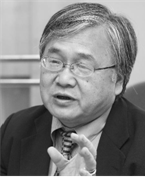
Hiroshi TANAKA
Hiroshi Tanaka was born in Tokyo, Japan in 1949. He received a Bachelor of Engineering degree from Tokyo University, Japan, in 1974 and a Master of Engineering degree from the Graduate School of Engineering, Tokyo University, Japan, in 1976. He received a Doctor in Medical Science degree from the Graduate School of Medicine, Tokyo University, Japan, in 1981 and a Ph.D. from the Graduate School of Engineering, Tokyo University, Japan, in 1983.
He was an Assistant Professor at the Institute for Medical Electronics in the School of Medicine of Tokyo University from 1982 to 1987, a Visiting Scientist at Uppsala University and Linkoping University in Sweden from 1982 to 1984, an Associate Professor at Hamamatsu University School of Medicine from 1987 to 1991, and a Visiting Scientist in the MIT Laboratory of Computer Science in 1990. He became a Full Professor of Bioinformatics at Tokyo Medical and Dental University in 1991 and has been the Dean of the Biomedical Science PhD Program of Tokyo Medical and Dental University since 2006.
He received an award for his achievements in information and communication technology from the Ministry of Internal Affairs and Communications in 2008.
His current research interests are medical informatics, systems biology, systems pathology, and clinical bioinformatics.

